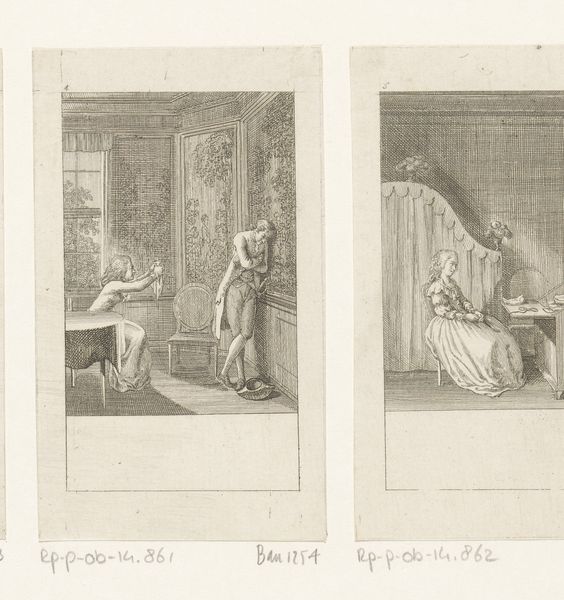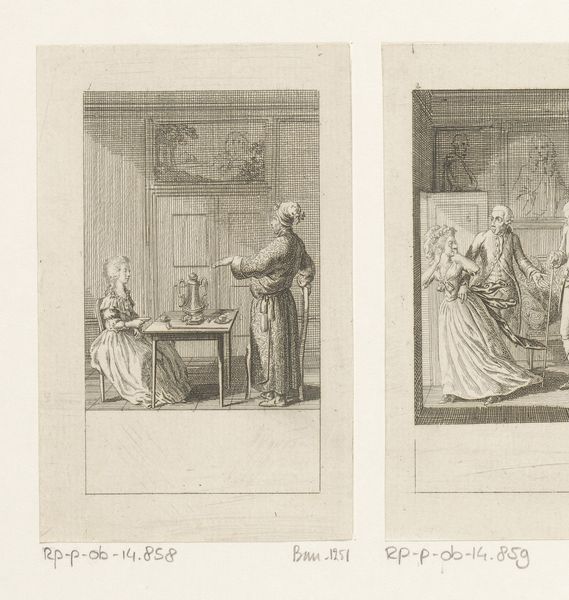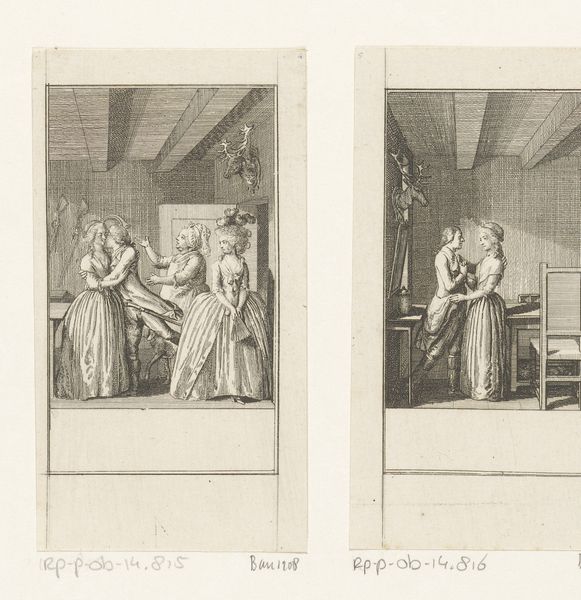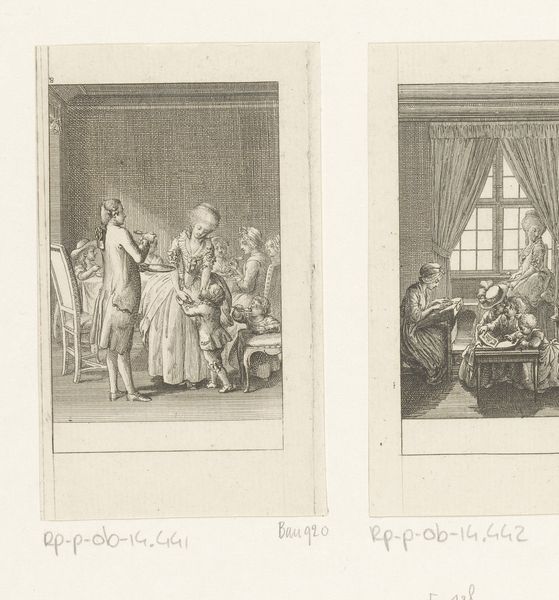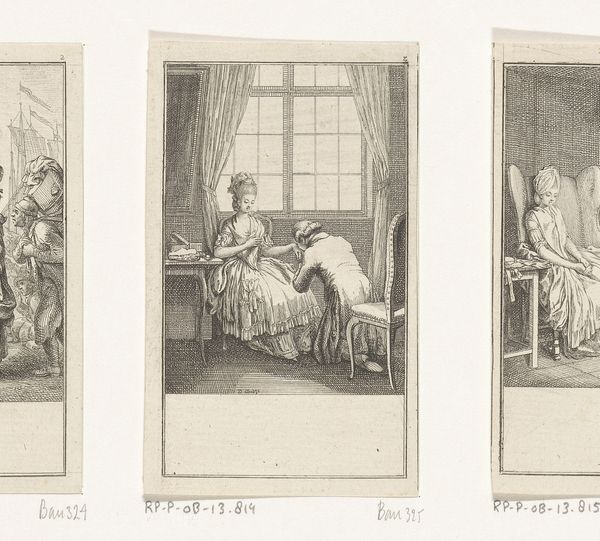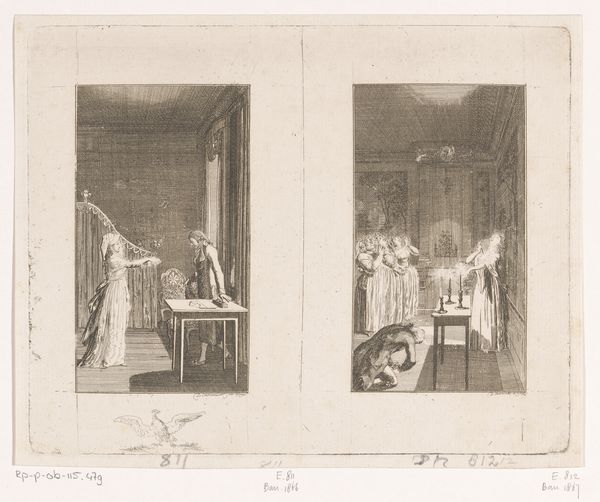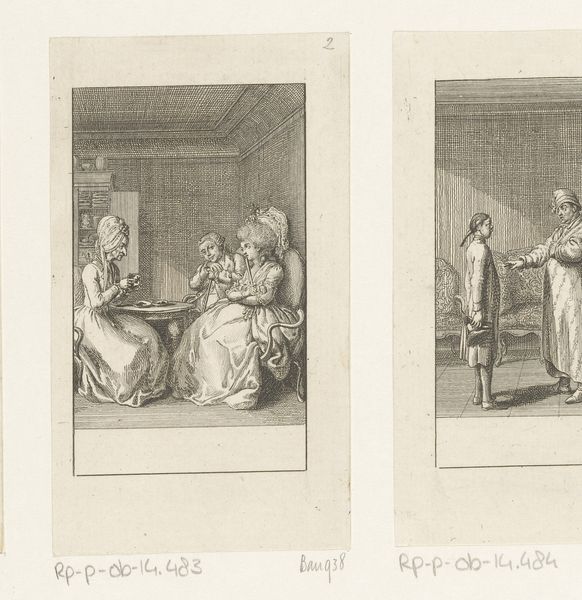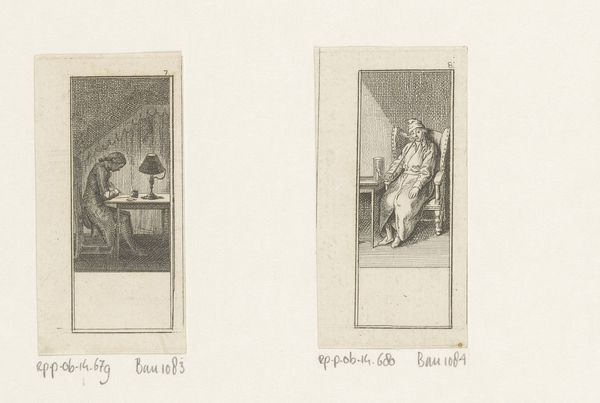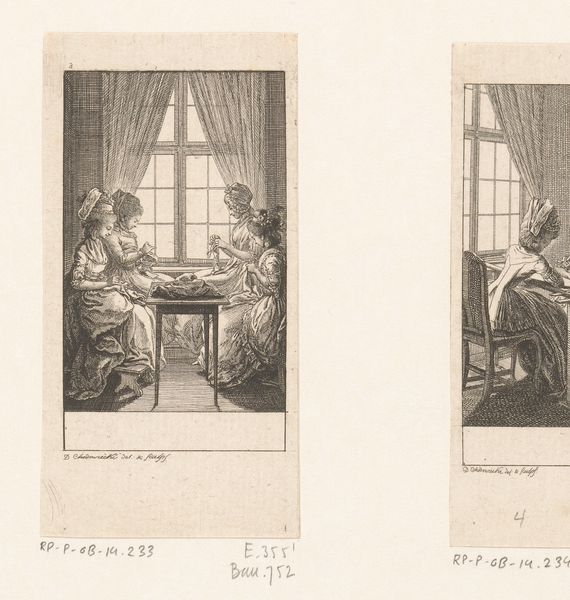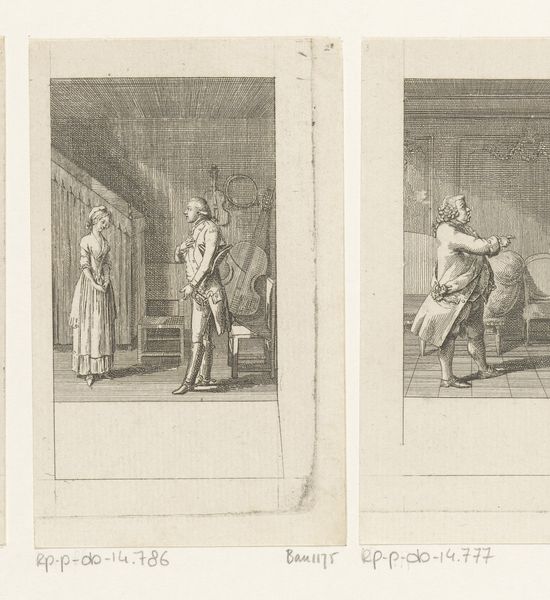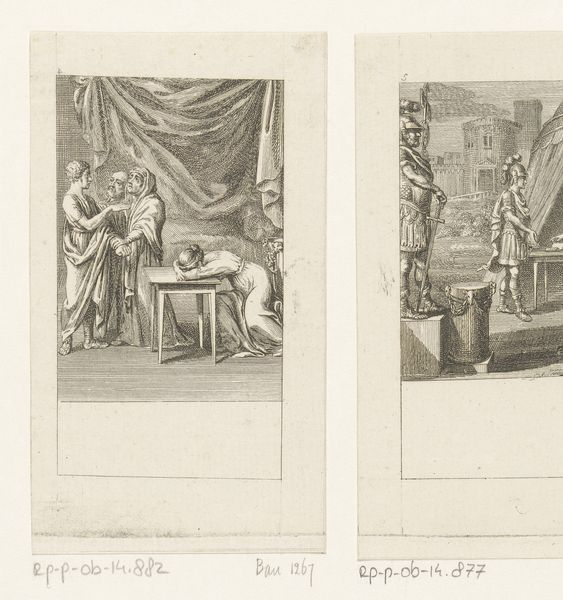
Baron Lindorf brengt een serenade aan het raam van Caroline 1786
0:00
0:00
Dimensions: height 107 mm, width 63 mm
Copyright: Rijks Museum: Open Domain
Editor: This is "Baron Lindorf brengt een serenade aan het raam van Caroline," created in 1786 by Daniel Nikolaus Chodowiecki, and it's an engraving. The detailed lines create such an intimate, domestic scene. What catches your eye about its formal elements? Curator: The composition, arranged as a diptych, compels our initial attention. Notice the architectural framing within each panel; it acts as a proscenium, immediately positioning the viewer as an observer. The consistent light source also brings visual unity. How does the line quality guide your eye? Editor: I notice how delicate the lines are, especially in rendering the figures' clothing and the interior decor. It creates a real sense of texture despite being a print. What can we tell about how the artist builds this world? Curator: Indeed. The emphasis on line weight is critical; finer lines are for areas in the distance and the background. Also consider how line is built up through hatching and cross-hatching. Observe where this appears most heavily – notice how it models forms and indicates a source of illumination, originating, it would seem, from behind the female figure. Do you see how these elements serve narrative function? Editor: It does emphasize a contrast between waiting and acting; seeing and being seen. I hadn't noticed how many levels the perspective included. Is it significant the artist chose a print? Curator: The reproductive nature of printmaking introduces semiotic possibilities. Here, it democratizes an intimate encounter for a wider viewership, though at the expense of artistic gesture. Editor: So it allows access to the narrative, but changes the meaning. I see how crucial these compositional and material decisions become when we think about meaning. Thanks! Curator: The act of viewing transforms meaning; it is an active process. I am grateful for your analysis.
Comments
No comments
Be the first to comment and join the conversation on the ultimate creative platform.
